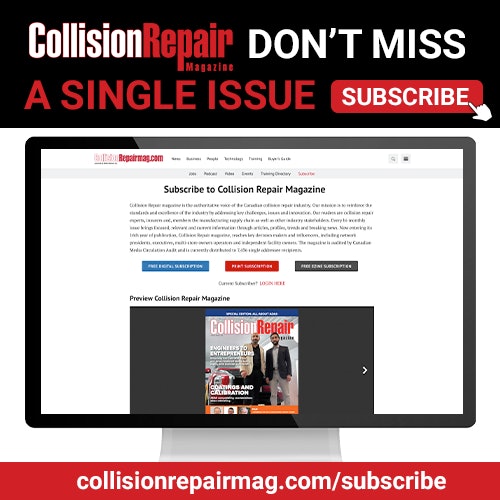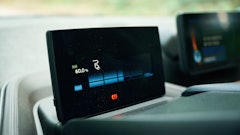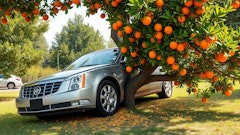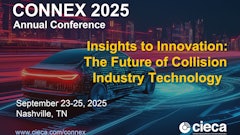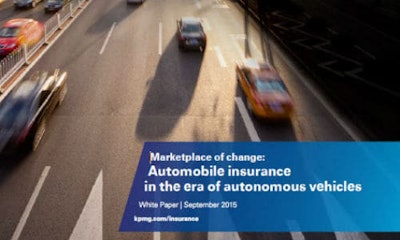
By Jeff Sanford
Toronto, Ontario — October 27, 2016 — Major accounting consultancy KPMG released a white paper this week covering the potential impact of autonomous vehicles on the auto insurance industry. It seems appropriate the report arrives the week of Halloween, as the main message is downright scary. According to the report, the coming adoption of autonomous vehicles will reduce the number of collisions so rapidly that the personal auto insurance sector in the US will shrink by 60 percent within 25 years. The report only deals with the US industry, but there’s no reason to assume that the same thing wouldn’t happen here.
On other hand, KPMG is known for releasing big, splashy studies with provocative messages. Controversial headlines are a good way to attract attention to their services. But anyone dependent on the insurance industry as it is will want to take note of the report.
According to the big brains at KPMG, the era of the autonomous vehicle is upon us. This new era will result in “foundational movements across the entire driving environment.” The big and controversial message in the report is that the auto insurance industry is about to undergo massive change.
According to the report, “KPMG’s Insurance practice estimates an 80 percent potential reduction in accident frequency by 2040. This will result in a “potentially drastic reduction in loss costs and premiums” for the auto insurance industry.
In some spicy remarks included in the report, Jerry Albright, Principal in KPMG’s Actuarial and Insurance Risk practice, was quoted as saying that the risk profile of vehicles is “changing daily” and that the subsequent drop in industry loss costs would “reduce the size of the auto insurance market, trigger consolidation in the personal lines space, attract new competitors and force dramatic operational changes within carriers.” Albright went on to say that “nearly accident-free vehicles could be here before autonomous vehicles, and while a shift in business strategy could take years, insurers must act now to differentiate themselves and gain a first-mover advantage.”
The report notes that traditional companies like General Motors have “created venture capital arms to channel significant amounts of capital into autonomous technology and connected transportation. In addition to funding from core manufacturing firms, ‘smart money’ is also starting to flow from VC firms.”
This is already happening. Mobileye, a technology company that aims to reduce collisions through vision-based assistance systems, went public in 2014, and is now valued at $12 billion. Intel has created a $100 million “Intel Capital Connected Car Fund” to accelerate technology innovation in the automotive industry. So there are big companies and big money moving toward this space.
That said, there is some way to go. On the issue of regulatory adoption the report notes that, as of earlier this year, “sixteen states have passed or introduced bills related to self-driving vehicles.” This makes it sound as if automated vehicles are right around the corner. Not quite. Much of this legislation is simply about the allowance of the testing of AVs on state roads, rather than bills allowing general use.
Some critics of AVs have pointed out that it will take at least a decade to digitally map the road system in a way that would allow AVs to operate anywhere in North America. It is not well understood, but the reason Google AVs work around the headquarters of that company in California is partly a result of the fact that area has been intensely digitally mapped. This is not the case for most of the country. Digitally mapping the road system will take time yet.
That said, over time, according to the report, “we believe that the sensors and interactive communication will be incorporated into the core infrastructure—pavement, traffic signals, road signs, and guard rails.” This new infrastructure will result in so-called V2I—vehicle to infrastructure—communication, which “should result in a fully integrated driving environment. The future autonomous vehicle environment will also allow for vehicles to move much more efficiently with each other.
“The implications on traffic could be dramatic. Research indicates that the ‘platooning’ of vehicles into organized groups could increase highway lane capacity by up to 500 percent,” according to the report. “We believe that as autonomous vehicles become more prevalent, existing infrastructure may be repurposed to promote even further usage … for example, high-occupancy vehicle (HOV) lanes may become autonomous vehicle exclusive, with lines of vehicles moving in coordinated cadence, reducing commute times and energy consumption.”
So there is a fascinating future emerging, and it will definitely have effects on both the insurance industry and the collision repair industry.
One predicted shift: “Commercial lines could take a larger share, as the marketplace moves towards car sharing and mobility on demand services.” This is according to Alex Bell, Managing Director in KPMG’s CIO Advisory practice, who was also quoted in the report. “As the vehicle makes more decisions, the potential liability of the software developer and manufacturer will increase too. In addition, losses covered by products liability policies will most likely increase because the sophisticated technology that underpins driverless vehicles will also need to be insured.”
When these new and expensive cars do get into an accident, they almost always will be expensive accidents. Interestingly, KPMG estimates that “accident expense could increase from almost US$14,000 currently to roughly US$35,000” in the future.
Nevertheless, the report suggests that personal auto lines are “likely bear the brunt of the transformation, as it will hold a smaller share of a smaller market … By 2040, we believe this sector will cover less than US$50 billion in loss costs in nominal dollars, compared with the current US$125 billion, with premiums moving nearly proportional … The shrinkage in real terms may be even greater.”
The KPMG report goes on to anticipate “severe implications” of a contracting premium environment, especially given that the “insurance industry as a whole has not generated an underwriting profit in personal or commercial auto for several years in a ‘normal; market environment.”
Joe Schneider, Managing Director at KPMG Corporate Finance, was quoted as saying that the continued proliferation of automated vehicles will put considerable strain on carriers. “Many insurers don’t have a profitability cushion to erode and lack the structural agility to shed costs quickly in an environment of rapid change,” said Schneider in the statement. “Once the massive market disruption begins and traditional insurance business models are flipped upside down, we expect significant turmoil across the industry.”
Here in Canada, Barrie Kirk is the head of the Canadian Automated Vehicle Center of Excellence (CAVCOE), an organization tracking the evolution of the AV sector. As alarmist as the KPMG report may sound, Kirk agrees with many of the basics. He is not afraid to predict that there will be more than just disruption in the auto insurance sector. He suggests the days of the stand-along single-vehicle auto insurance broker are numbered.
“I think this goes even further. The auto insurance industry will shrink dramatically, partly because collisions will decrease, but also partly because lifetime liability insurance may be bundled in with the cost of a new AV. Insurance products will change away from many consumer insurance policies to far fewer commercial and fleet policies. Many brokers will go out of business,” said Kirk. He delivered a similar message to the Canadian Association of Mutual Insurance Companies earlier this month. In that address Kirk warned that the impact of AVs will be “highly” disruptive in that collisions, payouts, premiums and revenues will all be reduced as a result of the emergence of AVs.
As AVs emerge there will be a couple of corresponding trends, including reduced car ownership and far fewer individual policies as lifetime liability insurance is bundled in with the cost of a car. There will be growth in commercial and fleet policies at the same time.
Interestingly, Kirk also predicted that currently-trendy “usage-based insurance is going nowhere.” Once computers are doing the driving the concept of usage-based insurance will be moot. For insurance brokers considering where to focus their energies in the future, according to Kirk, “consumer-oriented brokers will face declining revenues.” All-in, according to Kirk, “The auto insurance industry needs to start preparing for the AV era … 2020 is getting close.”
An infographic provided by KPMG outlines some of the more interesting facts from the report. The report itself can be found here.


